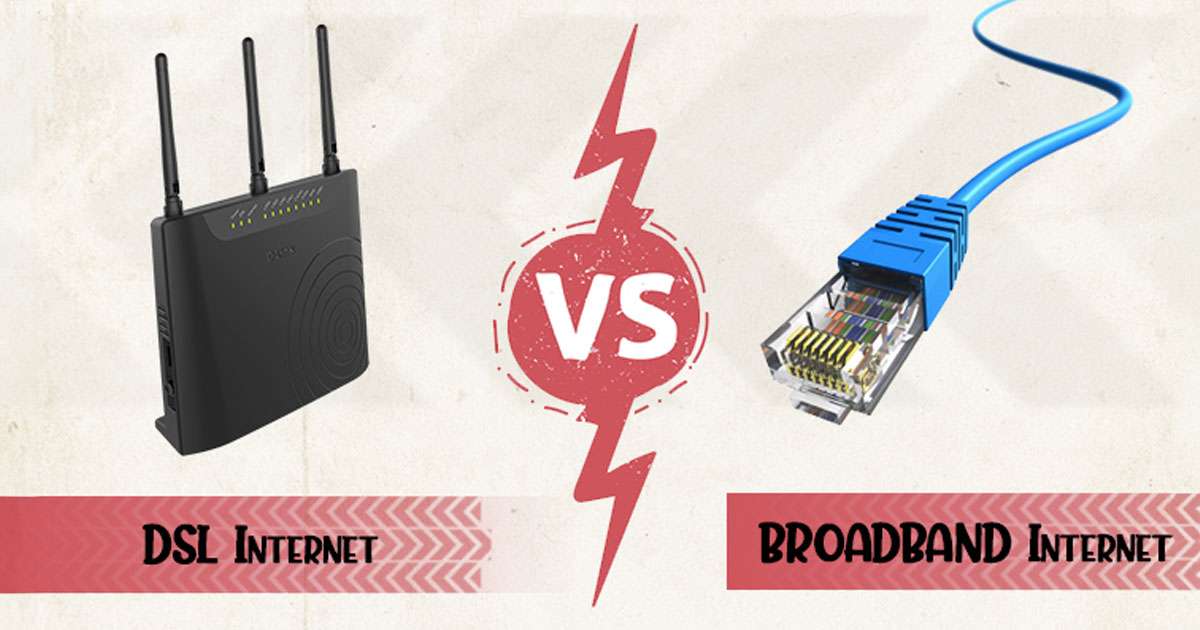Broadband vs. Dial-Up: Essential Differences You Should Understand

The internet has now become an indispensable part of our society and culture. Its history dates back to the 1960s when it was initially used as a way for government researchers to share information. From its humble beginnings, the internet has evolved dramatically, transforming from large, immobile computers to compact devices that fit in the palm of our hands. Today, a staggering 5.18 billion people are connected to the internet, accounting for more than half, or 64.6 percent, of the world’s population.
Despite this widespread use, not everyone is aware that different providers offer various types of internet connections. If you’re curious about your own internet connection or are considering switching providers, then this guide will help you understand the key differences between dial-up and broadband connections.
Dial-Up and Broadband: An Introduction
Dial-Up Connection
Dial-up is one of the earliest methods of connecting to the internet. It uses a modem and a telephone line to dial an Internet Service Provider (ISP) number and establish a connection. The data transmission in this case is analog and the maximum speed typically tops out at 56 kbps.
One important aspect to note about dial-up connections is that they do not support WiFi. This is because dial-up connections require a wired connection to the telephone line; hence, wireless internet via WiFi is not possible with dial-up.
Broadband Connection
Broadband, on the other hand, offers a high-speed internet connection that is always on. It uses a digital subscriber line (DSL), fiber optics, satellite, or cable to provide a much faster data transmission rate than dial-up. The minimum speed for broadband is typically set at 256 kbps.
In contrast to dial-up, broadband connections are compatible with WiFi. This means you can use a wireless router to create a WiFi network in your home or office, allowing multiple devices to connect to the internet simultaneously without the need for physical wires.
7 Key Differences Between Dial-Up and Broadband
When comparing dial-up and broadband, there are several key differences to consider:
1. Connection Method:
- Dial-up uses a telephone line to establish a connection with the Internet Service Provider (ISP).
- Broadband can use a Digital Subscriber Line (DSL), cable modem, fiber optics, or satellite to connect to the internet.
2. Speed:
- Dial-up has a maximum speed of 56 kbps.
- Broadband speeds start at a minimum of 256 Kbps and can reach up to gigabits per second (Gbps) depending on the type of broadband connection.
3. Availability:
- Dial-up is widely available as it only needs a standard telephone line.
- Broadband requires specific infrastructure, which might not be available in all areas, particularly in rural or remote locations.
4. Cost:
- Dial-up is generally cheaper than broadband.
- Broadband, although more expensive, provides higher speeds and better quality of service.
5. Quality of Service:
- Broadband is more reliable and offers smoother streaming of audio and video, better-quality video calls, and faster download and upload speeds.
- Dial-up, due to its slower speed, might not meet the needs of users who frequently download large files, play online games, or stream videos.
6. Equipment required:
- The dial-up connection uses a built-in modem and does not require a special router.
- Broadband requires a special router or modem.
7. Simultaneous Use:
- With dial-up, you cannot use the phone line and the internet simultaneously
- Broadband allows for simultaneous use of the telephone and the internet.
Understanding these differences can help you make an informed decision about which type of internet connection is best suited to your needs.
Advantages of Broadband over Dial-Up
Broadband offers a host of advantages over dial-up, making it the preferred choice for many internet users. One of the most significant advantages is speed. Broadband provides a faster connection, allowing for quicker downloads and uploads. This means that multimedia content streams more smoothly, and browsing the internet becomes a more responsive experience.
In contrast to dial-up, which requires a connection to be established every time you want to access the internet, broadband connections are ‘always on.’ This feature allows for instantaneous internet access without any waiting time.
Another advantage of broadband is its capacity for simultaneous use. Unlike dial-up, which restricts the use of the telephone line while connected to the internet, broadband allows for both internet and telephone use at the same time. This capability is particularly useful in households or businesses with multiple communication needs.
Broadband’s higher speeds make it an ideal choice for multimedia applications, such as video conferencing, online gaming, and streaming high-definition video. Moreover, broadband can support multiple devices simultaneously. Whether it’s computers, smartphones, or smart TVs, several devices can connect to the internet at the same time without affecting the connection speed, thereby accommodating the growing trend of multiple device usage in modern homes and offices.
Advantages of Dial-Up over Broadband
Despite the rise of broadband, dial-up still offers certain advantages that make it a viable choice for some users. One of these is its widespread availability. Dial-up can be accessed almost anywhere there’s a phone line, making it a practical option for those in remote or rural areas where broadband services may not yet have reached.
In terms of cost, dial-up is generally cheaper than broadband. For users who only require basic internet access and don’t need to transfer data at high speeds, dial-up can be a more economical choice.
Another advantage of dial-up lies in its increased security. Each time a user connects to the internet with dial-up, a unique connection is established, making it more difficult for hackers to gain unauthorized access.
Furthermore, dial-up does not require any special equipment like cable modems or fiber optic cables. A standard telephone line and a computer with a modem built-in are all that’s needed to establish a dial-up connection. This simplicity can be a significant benefit for users who prefer a straightforward and low-maintenance internet connection.
Broadband vs Dial-Up: Deciding the Better Internet Connection
These days, both internet and dial-up have their own benefits, and the user’s wants and situation will determine which one to choose.
Broadband is a great choice for modern homes and businesses that use the internet a lot because it has faster speeds, can connect more devices at once, and works better with video apps. On the other hand, dial-up can be a good option for people who live in remote places or just need basic internet service because it is easier to get, cheaper, safer, and doesn’t require any special tools.
But as our world becomes more digitally connected and as more and more people need fast internet for different reasons, broadband usually wins out over dial-up. It’s better suited to today’s internet needs because it’s faster and can handle multiple tasks and video apps. Thus, dial-up may still be useful in some situations, but broadband is generally a better and more secure option.

